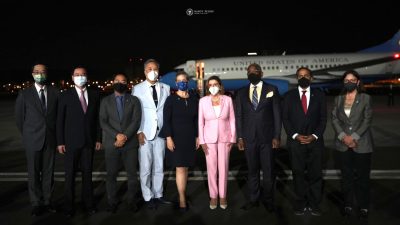Winds of War in Eurasia

All Global Research articles can be read in 51 languages by activating the “Translate Website” drop down menu on the top banner of our home page (Desktop version).
To receive Global Research’s Daily Newsletter (selected articles), click here.
Follow us on Instagram and Twitter and subscribe to our Telegram Channel. Feel free to repost and share widely Global Research articles.
***
House Speaker Nancy Pelosi‘s provocative visit to Taiwan is part of the U.S. escalation against China in what, in Pentagon geography, is referred to as the Indo-Pacific, i.e., the region stretching from the west coast of the United States to that of India. Here RIMPAC, the world’s largest naval exercise under U.S. command, is underway, with naval and air forces from 26 countries participating. It is directed against what the Pentagon calls “Chinese aggression,” accusing Beijing of preparing against Taiwan a military operation similar to that conducted by Russia in Ukraine. In this way, Washington is fueling, after the one in Ukraine, other hotbeds of war to hinder and break the Great Eurasian Partnership, which, proposed by President Putin in 2015, is being implemented with a series of projects of which the New Silk Road, promoted by China, is the backbone.
The International North-South Transport Corridor connects Russia to India and other Asian countries via Azerbaijan and Iran, along a much shorter, and therefore cheaper, route than the Atlantic and Mediterranean routes. US and EU sanctions against Russian oil and gas exports are thus thwarted. Another project underway is the China-Pakistan Economic Corridor, which opens access to the Arabian Sea to Chinese exports, and could extend to Afghanistan, a country the US and NATO have tried in vain to control through a costly and bloody 20-year war.
The growing economic integration of Eurasia, which encourages negotiated conflict resolution and intercultural dialogue, contributes concretely and substantially to the transition from the unipolar to the multipolar world, which the U.S. and other major powers in the West are trying hard to prevent.
*
Note to readers: Please click the share buttons above or below. Follow us on Instagram and Twitter and subscribe to our Telegram Channel. Feel free to repost and share widely Global Research articles.
This article was originally published on byoblu.
Manlio Dinucci, award winning author, geopolitical analyst and geographer, Pisa, Italy. He is a Research Associate of the Centre for Research on Globalization (CRG).
Featured image is from House Speaker Nancy Pelosi’s Facebook Page

